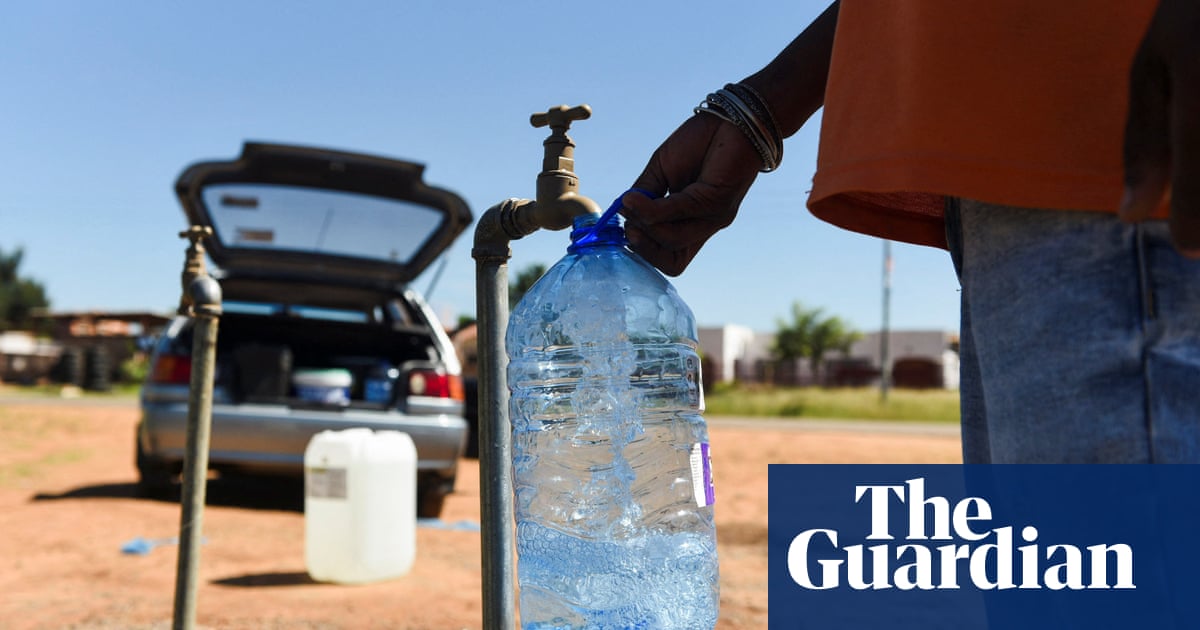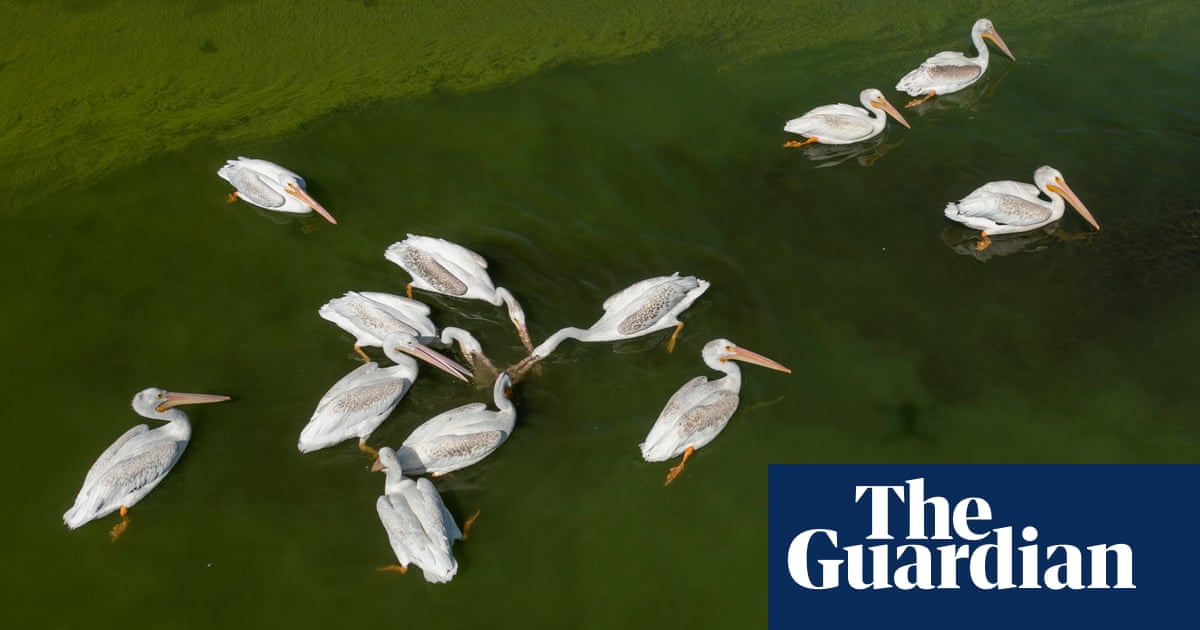There was something wrong with the chimpanzees. For weeks, a community of 205 animals in Uganda’s Kibale national park had been coughing, sneezing and looking generally miserable. But no one could say for sure what ailed them, even as the animals began to die.
Necropsies can help to identify a cause of death, but normally, the bodies of chimps are found long after decomposition has set in, if at all. So when Tony Goldberg, a US wildlife epidemiologist visiting Kibale, got word that an adult female named Stella had been found freshly dead, he knew this was a rare opportunity to look for an answer.
Goldberg and two Ugandan veterinary colleagues drove for two hours to a remote part of the park, then lugged their gear for another hour through the forested terrain to where Stella’s body lay. They lifted the 45kg animal on to a tarpaulin, and got to work. Crouching over the chimp – sweating beneath their full-body protective suits, their goggles fogging in the humid air – they meticulously worked through Stella’s organ systems, collecting samples. Not knowing what had killed her was “unnerving”, Goldberg recalls. “It could have been Ebola.”
As the necropsy progressed, however, Goldberg began to see telltale signs of a familiar disease: fluid buildup in Stella’s chest cavity and around her heart; lung tissue that was dark red, consolidated and marked with lesions. It looked like the chimp had died of severe pneumonia.
Months later, molecular testing revealed the culprit: human metapneumovirus (HMPV), one of a collection of viruses that presents in people as a common cold but is “a well-known killer” in our closest primate relatives, says Goldberg, a researcher at the University of Wisconsin-Madison. More than 12% of the community that Stella belonged to died in the outbreak. Others were lost as a result of being orphaned. “Stella had a baby that was clinging to her body for a while after she died,” Goldberg says. “The baby subsequently died.”
This phenomenon of animals catching diseases from humans, called reverse zoonoses, affects species around the world – from mussels contaminated with hepatitis A virus to tuberculosis transmitted to Asian elephants. But because of their evolutionary closeness to humans, great apes tend to be most vulnerable.
For some great ape populations that live in protected areas, reverse zoonoses are an even bigger threat than habitat loss or poaching. In a group at Kibale, for example, respiratory pathogens such as human rhinovirus C and HMPV have been the leading chimp killers for more than 35 years, accounting for almost 59% of deaths from a known cause.
For conservationists, the phenomenon presents a thorny problem. In many places in Africa, people live in close proximity to great apes. Great ape tourism has also become a central pillar of these endangered species’ conservation: ensuring habitats are preserved and local people are incentivised to support wildlife. But the same industry that funds protection of many apes could also be helping to drive them towards extinction, as close proximity to humans can expose the animals to deadly pathogens.
Tourism is necessary for conservation, says Gladys Kalema-Zikusoka, a wildlife veterinarian and founder of Conservation Through Public Health, a nonprofit group in Entebbe, Uganda. “But it needs to be done carefully, otherwise we won’t have these animals around.”
Some of the first records of reverse zoonoses in great apes were made by British primatologist Jane Goodall. In 1986, Goodall wrote that chimps “quite often” had colds and coughs, and “can contract the same contagious diseases as humans”. But conclusive evidence that chimps were being infected by people didn’t arrive until 2008, when Fabian Leendertz, the director of the Helmholtz Institute for One Health in Greifswald, Germany and his colleagues used molecular tools to show that human viruses were to blame for a decade’s worth of major respiratory disease outbreaks in chimps in Taï national park, Côte d’Ivoire.
Since the paper came out, habitat destruction, human encroachment, the climate crisis and globalisation have only accelerated, and all of Africa’s great ape species are now decreasing. Eastern and western gorillas are both critically endangered, while chimpanzees and bonobos are endangered. The fact that human diseases can take out significant proportions of great ape communities makes the pathogens a dire threat to all four species. “Great ape populations can’t afford these sorts of losses,” Goldberg says. “Their populations are already so small, fragmented and declining that they just don’t have the ability to rebound or adapt.”
Many of the pathogens cause infections that, in a person, would result in an annoying but mild cold. In great apes, however, these diseases can be deadly, because the animals have no immunity or evolved genetic resistance. Once a chimpanzee or gorilla becomes unwell, there is usually little that can be done to help. There are also no vaccines for most common cold viruses.
What could work, Goldberg realised, was a public-health approach: finding the source of pathogens and preventing them from getting into the populations in the first place.
In 2015, the International Union for Conservation of Nature (IUCN) released guidelines for great ape tourism, recommending that people stay at least 7 metres away from animals, tour groups limit their size, all visitors wear face masks and people who feel unwell be excluded.
But there are obvious reasons why that doesn’t always happen. For one, it relies on honesty from international visitors. “Imagine you’re an American tourist, you’ve gone all the way to Africa, and this is your bucket-list trip,” Goldberg says. “Now you’ve got a stomach ache – and you’re not going to go see the gorillas? Of course you are.”
Tourists often break rules while out in the field, either because of excitement in the moment or wilful disregard. “Some tourists just don’t listen,” says Kalema-Zikusoka. And local guides might or might not correct them. “They don’t want to be rude, and they find it hard to manage tourists.”
Guides may also refrain from reproaching visitors for fear of losing a potential tip. Some guides “get tips that are twice the monthly salary of typical villagers in the area”, Goldberg says. “There are all these perverse incentives.”
One 2020 study that analysed 282 YouTube videos of mountain gorilla tourism found that 40% depicted humans within arm’s reach of gorillas or engaging in physical contact with the animals.
In another 2020 study, Darcey Glasser, then a graduate student at Hunter College of the City University of New York, joined 101 chimp treks at Kibale. Glasser observed tourists coughing during 88% of excursions; sneezing in 65%; and urinating in 37%. “Everyone’s touching everything,” she says.
Glasser presented her findings to wildlife officials in Uganda, who responded encouragingly, she says, adding hand-sanitising stations at the start of trails. In general, however, officials tend to avoid imposing strict rules that they think may impact visitors’ experiences.
Great ape tourism is a key source of revenue for the 13 African countries where it occurs, Leendertz says, so reverse zoonosis is “not always an easy topic”. Officials at the Uganda Wildlife Authority, which oversees the country’s national parks and all tourism activity in them, did not respond to multiple interview requests.
Ecotourism represents one serious disease risk for great apes, but it cannot account for all cases of reverse zoonoses. Some great ape populations never see a tour group – Stella’s community among them – yet still experience deadly outbreaks of human pathogens.
As Goldberg thought about how to tackle this problem, he noticed a perplexing pattern in the list of human pathogens that typically afflict great apes: they’re the infections that, like clockwork, young children catch when they go back to school, and then bring home.
Great apes, it occurred to him, could be catching diseases from adults who go into the forest after catching pathogens from their children. The idea seemed even more plausible when Goldberg realised that adults infected with these “sniffle germs” often show no symptoms, even as they shed copious viral particles.
Goldberg secured a grant for new research, led by Taylor Weary, an epidemiologist who recently graduated from Goldberg’s lab, alongside Patrick Tusiime, health coordinator for the Kasiisi Project, a nonprofit group that supports primary schools around Kibale. They compared monthly nasal swabs from local schoolchildren, parents who worked in the forest, and faecal samples from the chimps.
The findings, which are now in review for publication, confirmed Goldberg’s original hypothesis. Every respiratory pathogen that has caused a chimp outbreak in Kibale was present in children living nearby. Then, during Uganda’s most stringent Covid-19 lockdown between March and September 2020, the researchers observed an “extraordinarily clear” drop in infections across the board, Goldberg says, suggesting that schools are indeed a major source of transmission.
The message, Goldberg says, was clear: “To save the chimps, we have to make kids healthier.”
One big takeaway from the findings was that the current model is inadequate to reduce the risk of reverse zoonoses in Kibale’s chimpanzees, and probably in great apes in Africa as a whole. It hinges on stopping symptomatic people from going into the forest, but infected adults are usually asymptomatic. Forbidding guides and trackers from working whenever their children are ill isn’t a solution, Goldberg says: kids “are sick all the time”.
Banning tourism also wouldn’t work. Parks depend on visitor fees to pay salaries, maintain local support for conservation and justify the cost of setting land aside for wildlife. “When I was growing up, the perception was that chimps are bad,” says Tusiime, who was born in a rural village near Kibale. “Now there’s a shift to a positive attitude towards chimpanzees because they bring in tourists, they bring in revenue.”
Focusing on making children living near great apes healthier, then, could be the best bet for keeping human diseases out of great ape populations. Programmes have already been launched to reduce transmission among local children, teaching handwashing and other hygiene measures.
Scientists also believe that enforcement of existing biosecurity rules could go a long way toward reducing transmission – but that will require focused commitment from African governments and tourism providers, says Cristina Gomes, a wildlife conservationist at Florida International University in Miami who helped launch a working group to identify new strategies. One idea is to entitle guides working with chimps to paid sick days – a luxury most do not have. Another suggestion is to certify companies that follow best practices, justifying a slightly higher fee for their services.
Common cold viruses cannot be eradicated, and people and great apes won’t be staying apart anytime soon. Goldberg says outbreaks of respiratory disease were documented in chimps in at least five locations throughout sub-Saharan Africa in 2023 alone.
The hope, however, is that these will become rarer as scientists, officials, rural residents and tourists gain a deeper understanding of the problem. “Behavioural change takes time, but if you’re committed, it eventually happens,” Tusiime says. “So we need to start now.”
A version of this report was previously published in Nature




